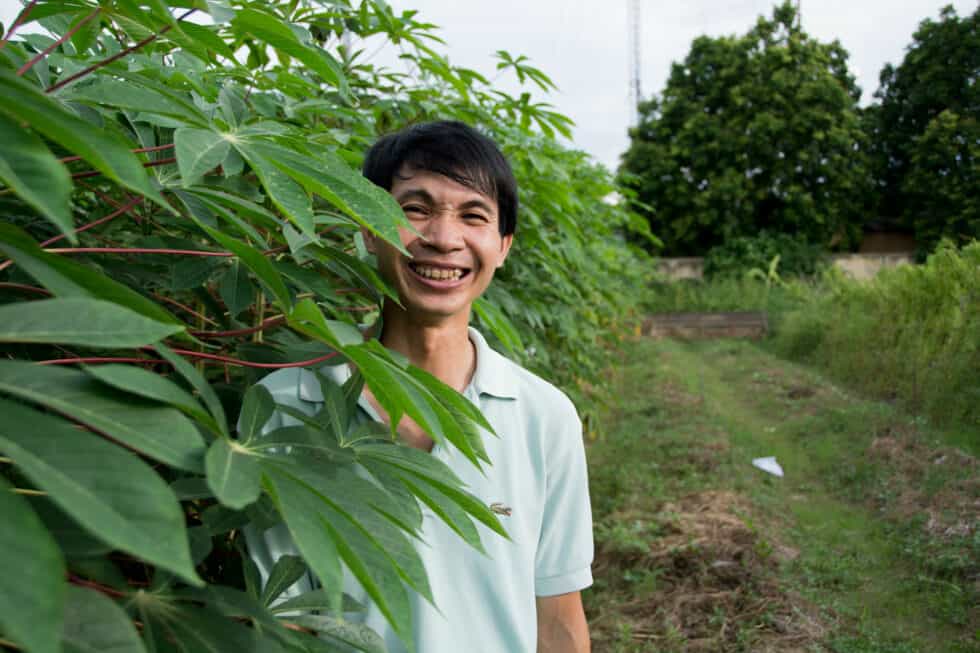
Please introduce yourself and tell us about how your work relates to legumes. How did you first fall in love with legumes?
The legume team at the Vietnam National Plant Genebank (Plant Resources Centre) includes:
1. Mr. Nguyen Van Kien, principal investigator
2. Ms. Nguyen Thi Hien, curator of legume seeds
3. Ms. Nguyen Thi Hang, breeder of legumes
4. Ms. Nguyen Thi Tuyet, documentation and information specialist
5. Ms. Ho Thi Thuong: legume seed physiology and dormancy specialist
6. Mr. Tran Huu Hai, legume crop and CWs in-situ conservationist
We are responsible for legume genetic resource conservation for food and agriculture in Vietnam. Activities include surveying, collecting, storage, regeneration, breeding, evaluation, documentation, and consultation/distribution to end users as well as raising awareness and political advocacy, co-development, and enforcement.
I first fell in love with legumes after seeing the colorful and diverse world of legume seeds in the genebank.
Can you describe a project that you’ve worked on recently that you’ve been excited about?
Each year, the Vietnam National Plant Genebank hosts and manages plant genetic resources for conservation and use in interventions in food and agriculture in Vietnam. This includes 45,000 accessions of 450 crop species and CWRs, both ex-situ and in-situ, associated with national parks and protected areas. Legume resources are a component of this annual project. They are key to agroecology/natural ecosystem and food systems in both genetic resources (species and variety levels) and bio-culture/bio-knowledge. This year, unlike in the past, interest in and research on legume crops is greater than other crops.
When it comes to legumes, what do you think are the biggest challenges a) for producers and b) for consumers?
When it comes to legumes, the primary challenge for both producers and consumers lies in the loss of genetic resources of legumes within both agroecology and natural ecosystems. This challenge is compounded by the need for relevant knowledge aligned with advances in biotechnology, dietary practices, and health sciences. Therefore, producers must be able to access legume genetic materials and relevant information in the best conditions as well as follow the directives of Sustainable Development Goal 12.
What facts about legumes do you think are useful in promoting them?
The indispensable role of legumes in socio-economic, cultural, and environmental matters is key to promoting them. They can help to achieve the Sustainable Development Goals.
Do you have a favourite legume? If so, why?
I would like to see an increase in legume species and varieties as well as human knowledge about them. Then there will be a growing awareness of the world of legume species and plants in general without any prejudice.



